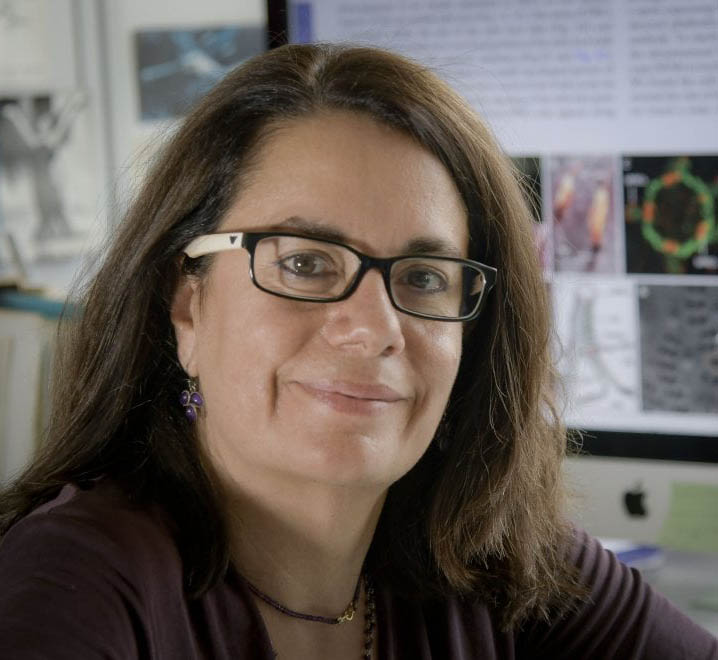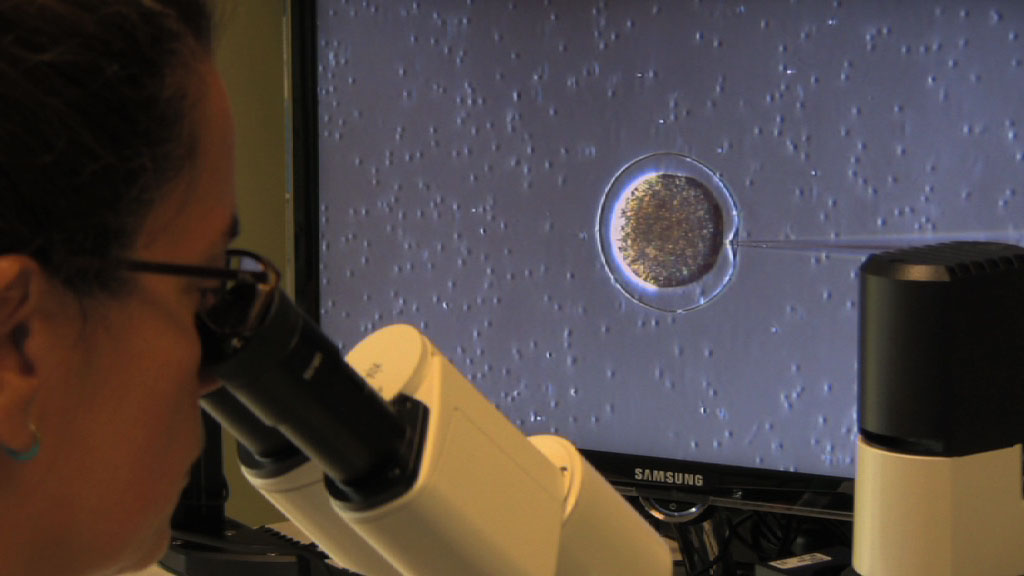 Research Director
Research Director
Biology and Evolution of Marine Organisms Department
Tel. +39 081 5833203 - +39 081 5833255
e-mail: ina.arnone(at)szn.it
Skype: miarnone
Arnone’s group website
Google scholar: https://scholar.google.com/citations?hl=en&user=_vDf5HQAAAAJ&view_op=list_works&sortby=pubdate
ERC sectors - Cellular, developmental and regenerative biology (LS3), Integrative biology: from genes and genomes to systems (LS2)
Settori scientifico-disciplinari - Biologia molecolare (BIO/11), Anatomia comparata e citologia (BIO/06)
Lab Members
Maria Lorenza Rusciano
Ennio Silvestri
Partner of the Marie Skłodowska-Curie Innovative Training Network EvoCELL and ZooCELL
Coordinator of the Human Frontier Science Program Project "Studying sea urchin dermal photoreception to unravel principles of decentralized spherical vision"
Research interests
The Arnone group main focus is to elucidate how Gene Regulatory Networks evolved to guide diverse organogenetic processes. Of particular interest to us is to understand which are the elements controlling the differentiation of the embryonic archenteron into a complex tripartite larval digestive tract equipped with distinct cell types regulating its function. An other field of interest concerns the study how the larval sensory system detects environmental cues, in particular food and light conditions, and investigate how this information is utilized to drive adaptation of developmental trajectories.
To answer these questions, we use echinoderms that are phylogenetically, together with the sister group hemichordates, ancient lineages of living non-chordate deuterostomes. Therefore, they provide an invaluable outgroup for assessment of what is ancient in chordates, what is chordate-specific, what is protostome-specific and represent a key group for studying the origin of deuterostomes. In our comparative studies, we use two sea urchin species: the Pacific Ocean species Strongylocentrotus purpuratus and the Mediterranean species Paracentrotus lividus, as well as the Pacific Ocean starfish species Patiria miniata.
Using multidisciplinary approaches spanning from high throughput sequencing techniques (RNA-seq, ChIP-Seq, ATAC-seq, scRNA-seq) to confocal (FISH, IHC) and electron based microscopy strategies (SEM, TEM, SBEM) paired with the in vivo gene expression perturbation (MASOs, CRISPR/Cas9), we aim to characterize specific echinoderm cell types at molecular, morphological and behavioral levels. Of particular interest currently are exocrine and endocrine cell types and various sensory cell types including visual and non visual photoceptor cells.
Selected Publications
*corresponding author
Mantica F, Iñiguez LP, Marquez Y, Permanyer J, Torres-Mendez A, Cruz J, Franch-Marro X, Tulenko F, Burguera D, Bertrand S, Doyle T, Nouzova M, Currie PD, Noriega FG, Escriva H, Arnone MI, Albertin CB, Wotton KR, Almudi I, Martin D, Irimia M. Evolution of tissue-specific expression of ancestral genes across vertebrates and insects. Nat Ecol Evol. 2024 Apr 15. doi: 10.1038/s41559-024-02398-5. Epub ahead of print. PMID: 38622362.
Cocurullo M, Paganos P , Benvenuto , Arnone MI. Characterization of thyrotropin-releasing hormone producing neurons in sea urchin, from larva to juvenile. Frontiers in Neuroscience. 2024, 18. doi: 10.3389/fnins.2024.1378520.
Jimenez-Guri E, Paganos P, La Vecchia C, Annona G, Caccavale F, Molina MD, Ferrández-Roldán A, Donnellan RD, Salatiello F, Johnstone A, Eliso MC, Spagnuolo A, Cañestro C, Albalat R, Martín-Durán JM, Williams EA, D'Aniello E, Arnone MI. Developmental toxicity of pre-production plastic pellets affects a large swathe of invertebrate taxa. Chemosphere. 2024 Apr 5;356:141887. doi: 10.1016/j.chemosphere.2024.141887. Epub ahead of print. PMID: 38583530.
Benvenuto G, Leone S, Astoricchio E, Bormke S, Jasek S, D'Aniello E, Kittelmann M, McDonald K, Hartenstein V, Baena V, Escrivà H, Bertrand S, Schierwater B, Burkhardt P, Ruiz-Trillo I, Jékely G, Ullrich-Lüter J, Lüter C, D'Aniello S, Arnone MI, Ferraro F. Evolution of the ribbon-like organization of the Golgi apparatus in animal cells. Cell Rep. 2024 Mar 26;43(3):113791. doi: 10.1016/j.celrep.2024.113791. Epub 2024 Feb 29. PMID: 38428420.
Schwaiger, M., Andrikou, C., Dnyansagar, R., Murguia, P.F., Paganos, P., Voronov, D., Zimmermann, B., Lebedeva, T., Schmidt, H., Genikhovich, G., Benvenuto, G., Arnone, M.I.*, & Technau, U.* (2021). An ancestral Wnt-Brachyury feedback loop and recruitment of mesoderm-determining target genes revealed by comparative Brachyury target screens. Nature Ecology and Evolution, 6(12), 1921-1939.
Paganos, P., Voronov, D., Musser, J.M., Arendt, D., & Arnone, M.I.* (2021). Single-cell RNA sequencing of the Strongylocentrotus purpuratus larva reveals the blueprint of major cell types and nervous system of a non-chordate deuterostome. Elife, 10, e70416.
Arnone, M.I.*, Andrikou, C., & Annunziata, R. (2016). Echinoderm systems for gene regulatory studies in evolution and development. Current Opinion in Genetics & Development, 39, 129-137.
Andrikou, C., Pai, C.Y., Su, Y.H., & Arnone, M.I.* (2015). Logics and properties of a genetic regulatory program that drives embryonic muscle development in an echinoderm. Elife, 4, e07343.
Ullrich-Lüter, E.M., Dupont, S., Arboleda, E., Hausen, H., & Arnone, M.I.* (2011). A unique system of photoreceptors in sea urchin tube feet. Proceedings of the National Academy of Sciences, 108(20), 8367-8372.












